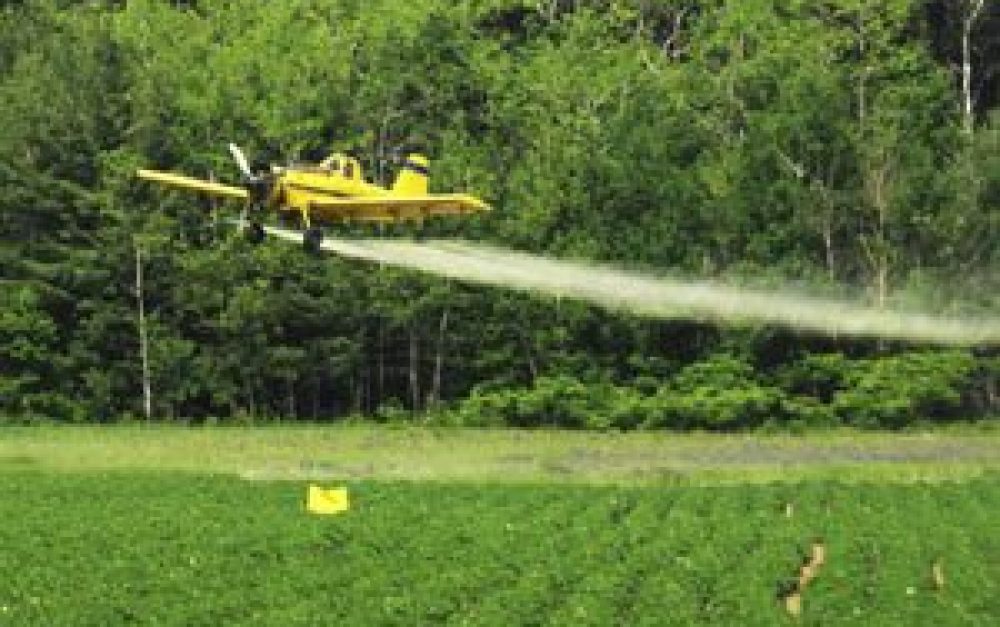Today Pesticide Action Network (PAN) is releasing Pesticide Drift Monitoring in Minnesota, a report that documents multiple pesticides in the air near homes and farms throughout Central Minnesota. This report is the result of diligent, on-the-ground monitoring by a group of citizens who have directly experienced harm from pesticide exposure — and are refusing to let it continue.
Since joining PAN earlier this year, collaborating with this group of farmers and rural residents has been my absolute favorite work. Their persistence in shining a light on pesticide exposure in their communities has both given me hope and shown me the severity — and urgency — of the problem.
The group, Minnesotans for Pesticide Awareness (MNPA), has been working together to fight pesticide drift since 2005, when they approached PAN for help with community air monitoring. Each member of the group had experienced harms to their health or their livestock from pesticide exposure.
The monitoring results released today clearly show that these citizens are being regularly exposed to multiple pesticides — including the common potato fungicide chlorothalonil — for several months each summer.
Grassroots leaders
MNPA is made up of people like Don and Norma Smith, who raised sheep for years until land uses changed and they found their pasture surrounded by potato fields. They began losing lambs to infertility, miscarriages and birth defects, and eventually sold off the balance of their flock. Carol Ashley, another member, developed a sensitivity to pesticides early in life when working in a greenhouse. Now she lives near Park Rapids, MN in a rural home that is frequently drifted upon. Says Carol:
Living near potato fields, I’ve frequently been exposed to pesticide drift in the last 15 years or so. One type of pesticide wipes me out so that I can barely move for days. I have to struggle to breathe.
Each member of this coalition has faced health harms and other difficulties from pesticide drift, and has at times run of out patience after their stories prompted little response from government agencies. By now, they each know the pesticide drift complaint process all too well. They've taught me realities about the pesticide regulatory process that you can't find on agency websites.
Catching drift
Back in 2006, PAN scientists trained MNPA members to use drift catcher technology to monitor the air near their homes and farms. Between 2006 and 2009, the group collected 340 samples at 19 sites near six towns. Results from the testing showed pesticides present in a large majority of the samples.
They found chlorothalonil most often — more than 60% of the time.
Chlorothalonil is classified by EPA as a probable carcinogen. It's considered "highly toxic" when inhaled and only "slightly toxic" when ingested, yet so far, the Agency has based its safety regulations on studies of ingestion. This means that we don't really know what the health impacts could be from breathing chlorothalonil on a regular basis, like these folks in Minnesota do every summer. PAN is urging EPA to rethink their evaluation of chlorothalonil, to include both the potential harms of inhalation and of long-term exposure.
Earlier today, members of the coalition took time out of their busy spring planting season to drive almost five hours down from Central Minnesota to the Capitol Building in St. Paul for the release of the report. They were relieved to speak out, and to have the results of their grassroots science shared far and wide. And they're determined to keep shining a light on this problem until state agencies take action to stop the drift.
Take Action » EPA is currently reviewing chlorothalonil's health risks. Please sign PAN's petition urging Administrator Lisa Jackson to carefully consider the on-the-ground evidence from Minnesota showing that communities are, in fact, breathing this common pesticide. The agency's health standards should reflect this.








